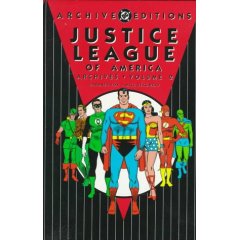
By Gardner Fox, Mike Sekowsky & Bernard Sachs (DC Comics)
ISBN: 1-56389-119-0
When Julius Schwartz revived the superhero genre in the late 1950s, the key moment came with the inevitable teaming of the reconfigured mystery men and the relatively unchanged big guns who had weathered the first fall of the Superhero at the beginning of the 1950s into a new, modern, Space-Age version of the Justice Society of America.
When the Justice League of America was launched in issue #28 of The Brave and the Bold (March 1960) it cemented the growth and validity of the genre, triggering an explosion of new characters at every company producing comics in America and even spread to the rest of the world as the 1960s progressed.
This second volume in the deluxe hardcover reprint series re-presents issues #7-14 of the pivotal and oh-so-enjoyable series featuring DC’s costumed adventurers in tales that combine mystery with adventure, battle villainy with true heroism and run the gamut of science fiction, crime and even black sorcery.
All the tales here were produced by the magical team of Gardner Fox, Mike Sekowsky and Bernard Sachs and star Flash, Green Lantern, Wonder Woman, Aquaman, Green Arrow and the Manhunter from Mars, as well as boy mascot Snapper Carr and an increasingly more involved Superman and Batman (whose editors in those simpler times initially feared that their characters could be “over-exposedâ€).
The fun kicks off with an intergalactic mystery tale in #7. An alien plot to secure a weapon–probe leads our heroes to a local amusement park and more specifically ‘The Cosmic Fun-House!’, whilst the next issue’s ‘For Sale – the Justice League!’ is a sharp crime-caper wherein cheap hood Pete Ricketts finds a mind-control device that enslaves the team. Once again ordinary guy Snapper Carr has to save the day.
Issue #9 is a well-known and oft-recounted tale, and the start of a spectacular run of nigh-perfect super-hero adventures. ‘The Origin of the Justice League’ recounts the circumstances of the team’s birth; an alien invasion saga that still resonates with modern readers and it’s followed by the series’ first continued story.
‘The Fantastic Fingers of Felix Faust’ finds the World’s Greatest Superheroes already battling an invader from the future when they’re spellbound by the eponymous sorcerer. Faust has awoken three antediluvian demons and sold them the Earth in exchange for 100 years of unlimited power. Although the Justice League defeats the magician they have no idea that the demons are loose…
In the next instalment, ‘One Hour to Doomsday’, the JLA pursue and capture the still undefeated chronal conqueror The Lord of Time, but are trapped a century from their home-era by the awakened and re-empowered trio of Demons. This level of plot complexity hadn’t been seen in comics since the closure of EC Comics, and never before in a superhero tale. It was a profound acknowledgement by the creators that the readership was no longer simply little kids – if indeed it ever had been.
Arch-villain Doctor Light attempted a pre-emptive strike on the team in #12, although ‘The Last Case of the Justice League’ proved to be anything but, and with the next issue the heroes saved the entire universe by solving ‘The Riddle of the Robot Justice League’.
Schwartz’s avowed intent with his new Superteam was to eventually include every costumed adventurer in the DC pantheon, but he limited himself – or was resisted by other editors – to his own stable after the introduction of Green Arrow in #4 (see Justice League of America: Archive Edition Volume 1 ISBN: 1-56389-043-7). ‘The Menace of the “Atom†Bomb’ in issue #14 was a clever way of introducing the next member The Atom whilst showing a fresh side to an old villain with a new gimmick, and is a fine tale to end this volume on.
These classic superhero tales are some of the finest to come out of the 1960s and are still as fresh and engrossing today as they ever were. That they are also perfect fare to introduce new and especially young readers to our world is an added and invaluable bonus.
© 1961, 1962, 1993 DC Comics. All Rights Reserved.

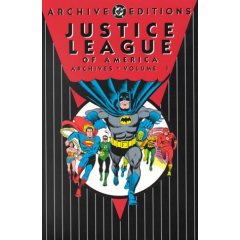
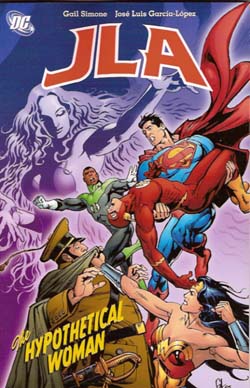
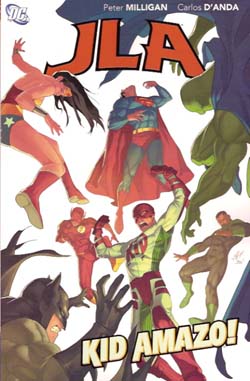
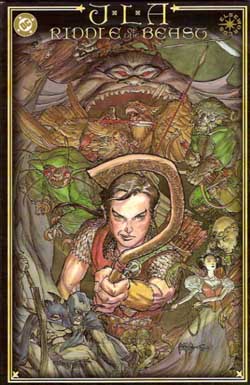
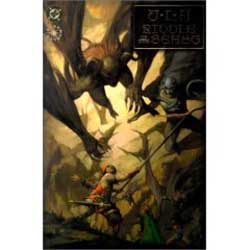
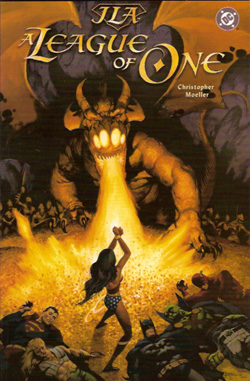
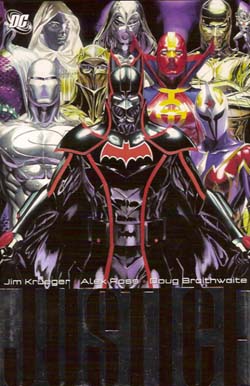
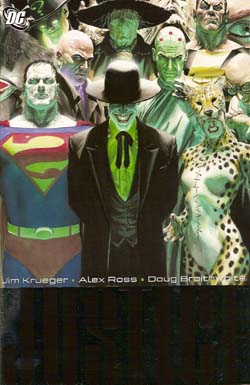
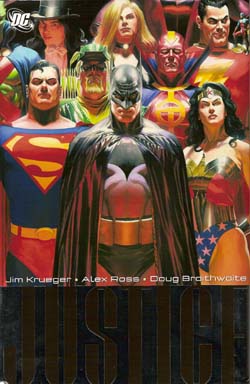
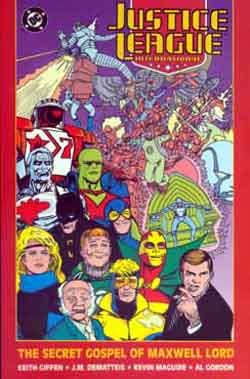 Â
Â